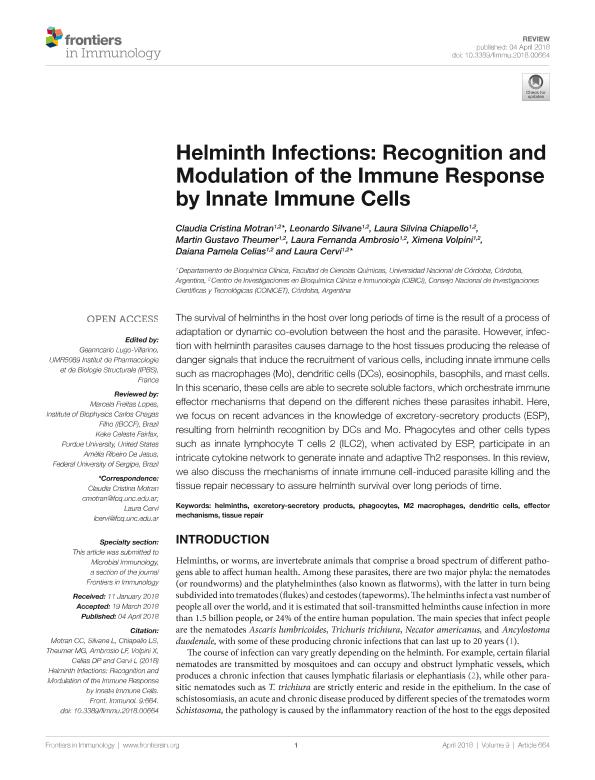Artículo
Helminth Infections: Recognition and Modulation of the Immune Response by Innate Immune Cells
Motran, Claudia Cristina ; Silvane, Leonardo Micael
; Silvane, Leonardo Micael ; Chiapello, Laura Silvina
; Chiapello, Laura Silvina ; Theumer, Martín Gustavo
; Theumer, Martín Gustavo ; Ambrosio, Laura Fernanda
; Ambrosio, Laura Fernanda ; Volpini, Ximena
; Volpini, Ximena ; Celias, Daiana Pamela
; Celias, Daiana Pamela ; Cervi, Laura Alejandra
; Cervi, Laura Alejandra
 ; Silvane, Leonardo Micael
; Silvane, Leonardo Micael ; Chiapello, Laura Silvina
; Chiapello, Laura Silvina ; Theumer, Martín Gustavo
; Theumer, Martín Gustavo ; Ambrosio, Laura Fernanda
; Ambrosio, Laura Fernanda ; Volpini, Ximena
; Volpini, Ximena ; Celias, Daiana Pamela
; Celias, Daiana Pamela ; Cervi, Laura Alejandra
; Cervi, Laura Alejandra
Fecha de publicación:
04/2018
Editorial:
Frontiers Media S.A.
Revista:
Frontiers in Immunology
ISSN:
1664-3224
Idioma:
Inglés
Tipo de recurso:
Artículo publicado
Clasificación temática:
Resumen
The survival of helminths in the host over long periods of time is the result of a process of adaptation or dynamic co-evolution between the host and the parasite. However, infection with helminth parasites causes damage to the host tissues producing the release of danger signals that induce the recruitment of various cells, including innate immune cells such as macrophages (Mo), dendritic cells (DCs), eosinophils, basophils, and mast cells. In this scenario, these cells are able to secrete soluble factors, which orchestrate immune effector mechanisms that depend on the different niches these parasites inhabit. Here, we focus on recent advances in the knowledge of excretory-secretory products (ESP), resulting from helminth recognition by DCs and Mo. Phagocytes and other cells types such as innate lymphocyte T cells 2 (ILC2), when activated by ESP, participate in an intricate cytokine network to generate innate and adaptive Th2 responses. In this review, we also discuss the mechanisms of innate immune cell-induced parasite killing and the tissue repair necessary to assure helminth survival over long periods of time.
Archivos asociados
Licencia
Identificadores
Colecciones
Articulos(CIBICI)
Articulos de CENTRO DE INV.EN BIOQUI.CLINICA E INMUNOLOGIA
Articulos de CENTRO DE INV.EN BIOQUI.CLINICA E INMUNOLOGIA
Citación
Motran, Claudia Cristina; Silvane, Leonardo Micael; Chiapello, Laura Silvina; Theumer, Martín Gustavo; Ambrosio, Laura Fernanda; et al.; Helminth Infections: Recognition and Modulation of the Immune Response by Innate Immune Cells; Frontiers Media S.A.; Frontiers in Immunology; 9; 4-2018; 1-12
Compartir
Altmétricas



